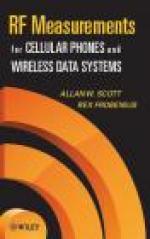Third order intercept point. The point where the output power of the fundamental tones would equal that of the third order intermodulation products if the linear performance of the device would continue for all input power levels. In actual practice, the linear performance degrades starting at the 1dB compression point, so the third order intercept point can never be achieved. Nonetheless it demonstrates the ability of an amplifier, particularly in receivers, to handle strong signal power levels without distortion. The higher the value the better the performance.
See also: Wikipedia article.
www.rfmentor.com
Tools and training to help your RF/Wireless career
Menu
Main menu
Quick Links
User menu
User login
Popular content
- Videos from Microwave Journal
- What's New in Digital Predistortion
- Pasternack RF Calculators and Conversions
- Training Courses on RF/High Speed PCB Design
- RF Globalnet
- Ringing with High Quality Components
- Specifying Calibration Standards and Kits for Keysight Vector Network Analyzers
- Microwaves and RF Magazine
- eCalc Scientific Calculator
- LC Resonance Plotter


